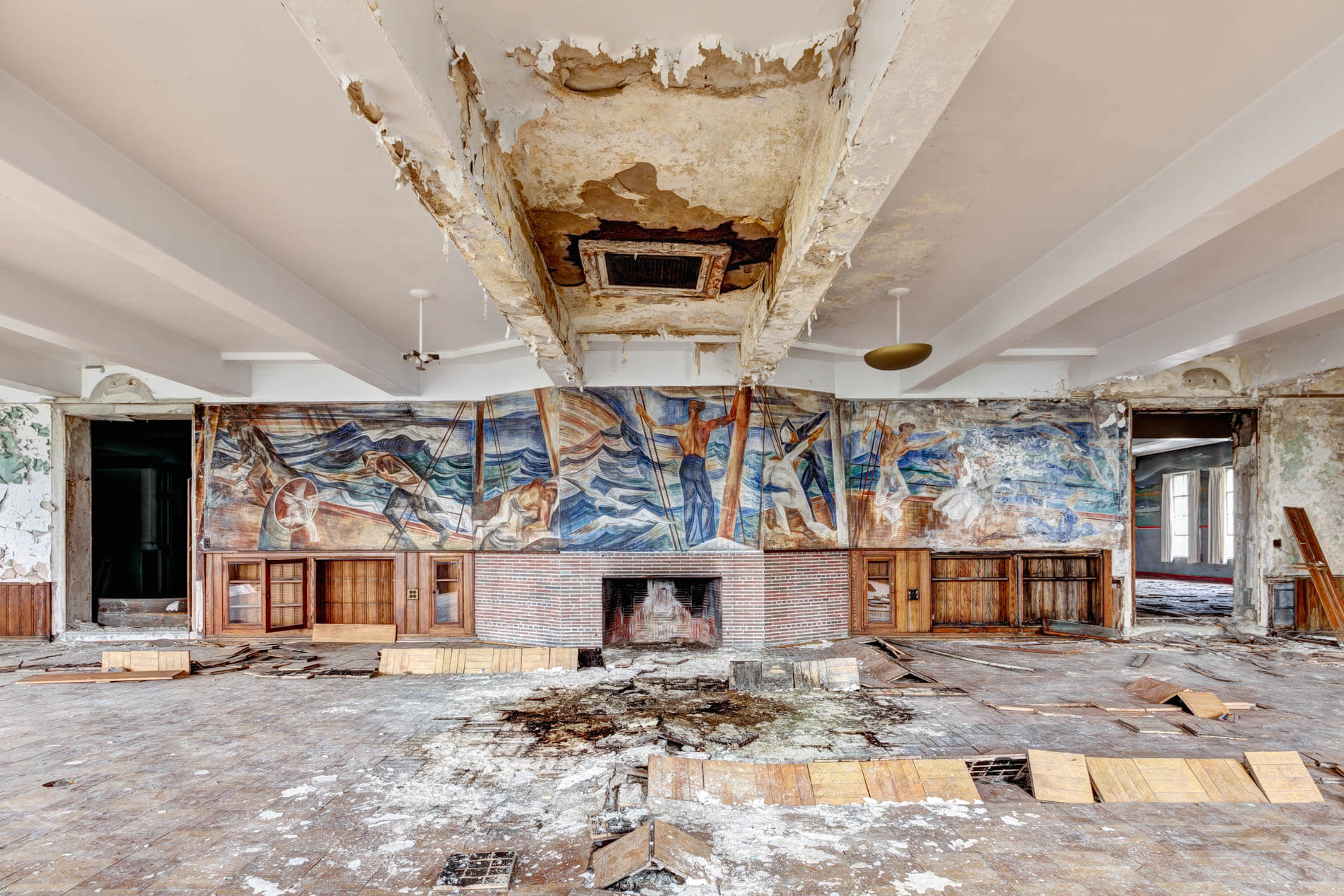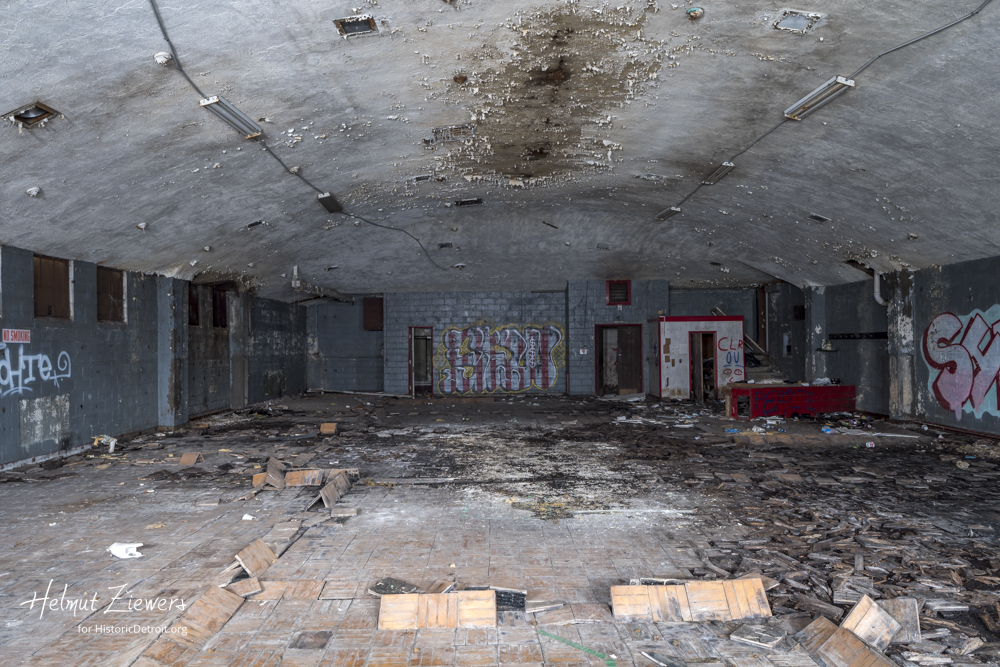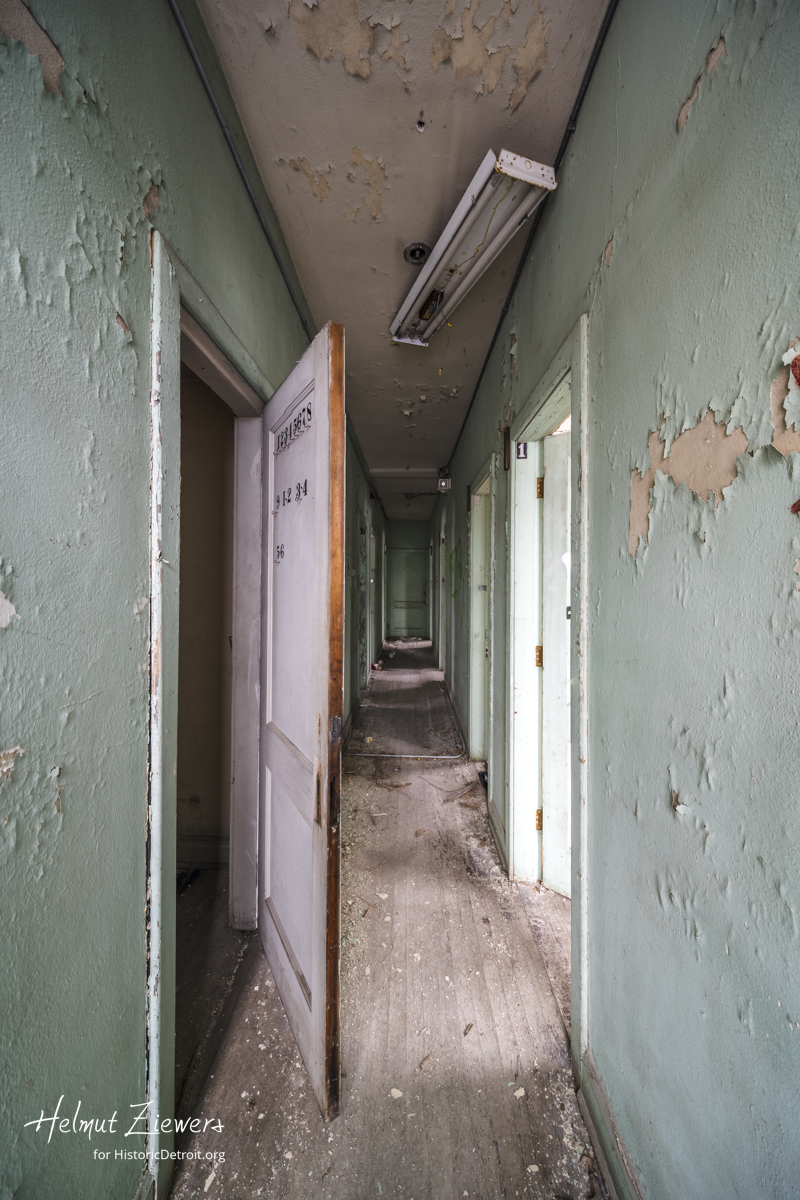Brodhead Naval Armory - Photos
Brodhead Naval Armory

Pewabic plaques on the front entrance as seen from Jefferson Ave. in 2023. They represent each of the armed services affiliated with sea duty and one with the seal of the state of Michigan.

East facade of the Brodhead Naval Armory building. The building was designed in the modernistic style by the prestigious Detroit architectural firm of Stratton & Hyde, of whom William B. Stratton was a former naval militiaman.

West side of the Brodhead Naval Armory building as of 2023. The armory was built of Indiana limestone with masonry load-bearing walls.

Four story backside facing the Detroit river. Richard Thornton Brodhead (1879 - 1947) was instrumental in establishing this permamnt home for the Detroit-based naval militia and marine corps divisions.

Designed in two sections, the drill deck (gymnasium) area was in the north end and the three story office section was near the river end. Training of the Naval and Marine Corps Reservists continued throughout the 1930's.

Creative means of raising funds to pay for upkeep were sought. The drill deck (gymnasium) was particularly well-suited to rental for large public gatherings, as Detroit's large indoor auditoriums had not yet been built, so the armory served the community as its premier events center of the day.

The Federal Art Project (FAP) was an agency within the WPA (Works Progress Administration programs) designed to keep artists working during the Depression by applying their skills to decorate government buildings. The wardroom, the officers dining room as seen in this picture, provided a perfect setting for David Fredenthal's largest mural painting.

Brodhead and architect William Stratton approved Fredenthal's plan for remaking an entire wall, including the installation of a fireplace and bookshelves, parts of which can still be seen in this image

The whole effort resulted in a sixty-foot mural of five panels portraying the range of experiences of shipboard life. Sailors in weather gear strain against the wind and rain on the deck of a rolling ship in the first panel, an exhausted gob sleeps in the second, a lone sailor looks into the vastness of the sea in the central panel above the fireplace.

Two men exert themselves hauling away on a line in the fourth panel, and four men relax and dance to a squeeze box and harmonica in the fifth mural.

Fredenthal's style was expressionistic, emphasizing line rather than form, and achieving definition of shape with color.

The mess hall, as seen here and adjacent to the wardroom, was painted with a mural by Edgar Yaeger that portrayed the ships that served the naval militias of Michigan and the other Great Lakes States that joined together in their summer cruises.

Yaeger approached the difficult task of taking a rectangular room, six feet high by 180 feet around, and giving the ships and their setting a sense of depth and dimension.

In each corner of the room, the foreground of the mural presented deck fittings, ship superstructures, masts, and lines to give the viewer the perspective that he or she was aboard a ship, looking out to port or starboard.

The other ships were then arranged at different angles around the viewer's vessel, as if they were all cruising in one great fleet.

Yaeger worked on the project twenty hours a week at an hourly rate of $ 1.00

Some detail of Yaeger's beautiful work

A view from the bar area into the "mess hall"

There is not a lot left of the bar area.

Bar area with a view at the stairwell leading to the ward room.

View from mess hall into the bar

View at the Detroit river from the ward room

View from the Mess hall at the River Terrace Apartment buildings

A view of what's left of the auditorium

Opposite view of what's left of the auditorium

The Brodhead's gymnasium in 2020

4th floor hallway in the office complex

Gustav Hildebrand, one of Yaeger's assistants, wanted to try carving into plaster, so a Belgian immigrant who had aided the muralists laid the plaster for Hildebrand.

Assisted by James Johnson, who later did FAP artwork at the University of Michigan, Hildebrand carved into the four walls by the main east entrance on the first floor as if he were doing a line drawing.

In these walls he depicted everyday activities of sailors.

Another example of everyday activities

According to one expert of Depression-era art, Brodhead Naval Armory contains "the richest WPA art collection of any building in Michigan, with the greatest variety of different media in one collection."

One last look at one of the images taken in the "mess hall" in 2020.

Utility room on the top floor of the office building

Stairway leading up to the fourth floor penthouse wing of eight rooms which were built to quarter visiting officers.